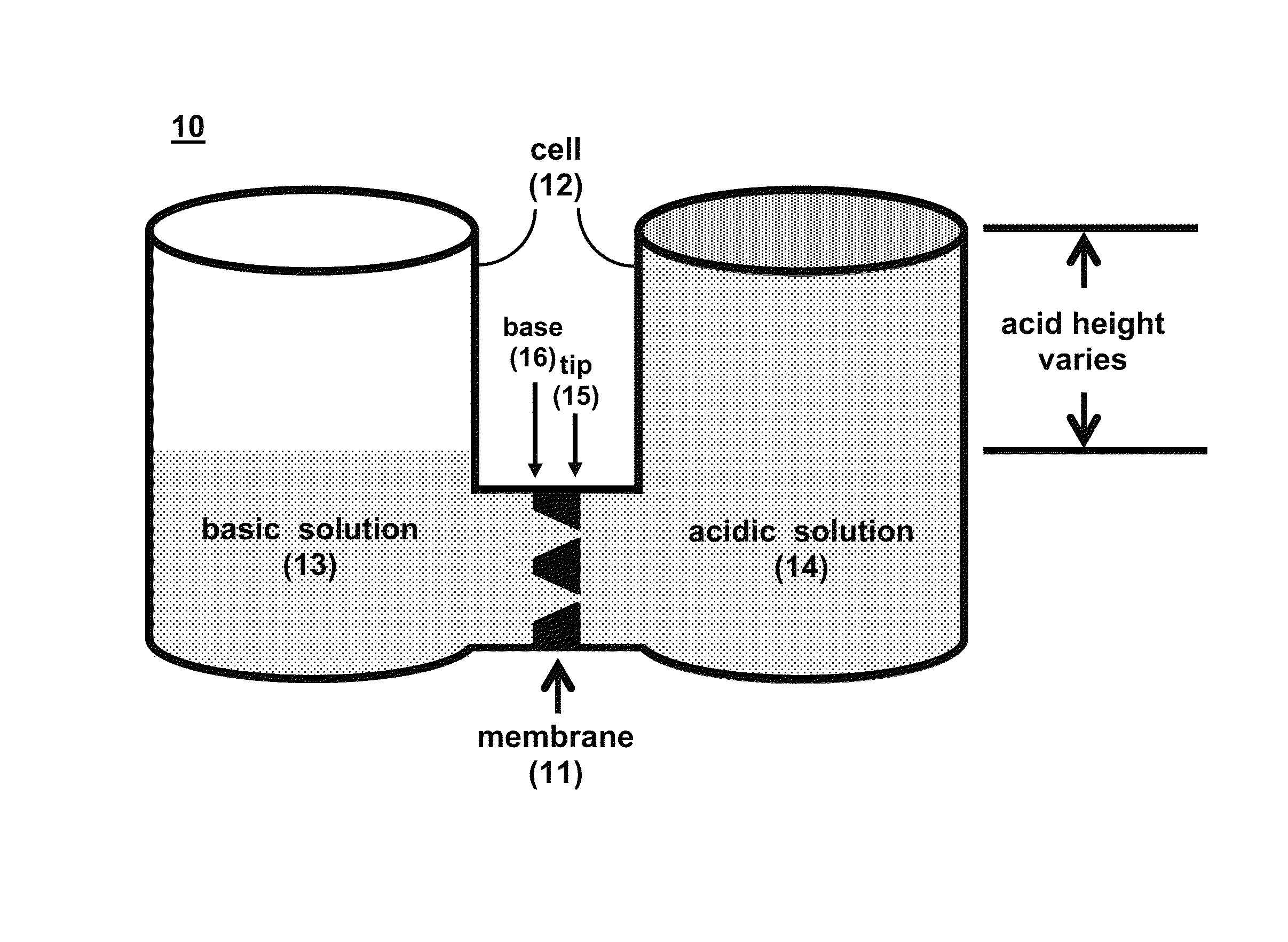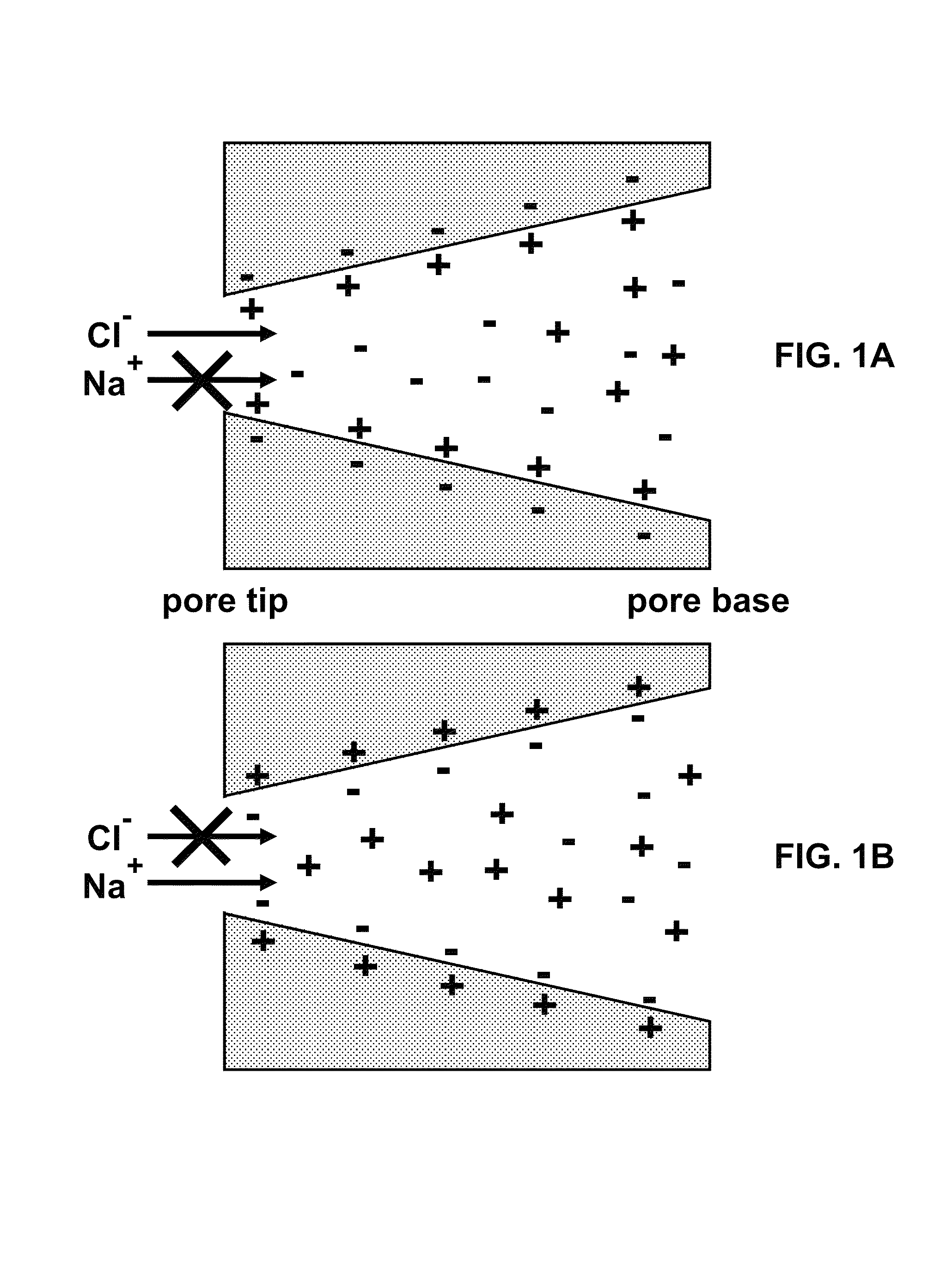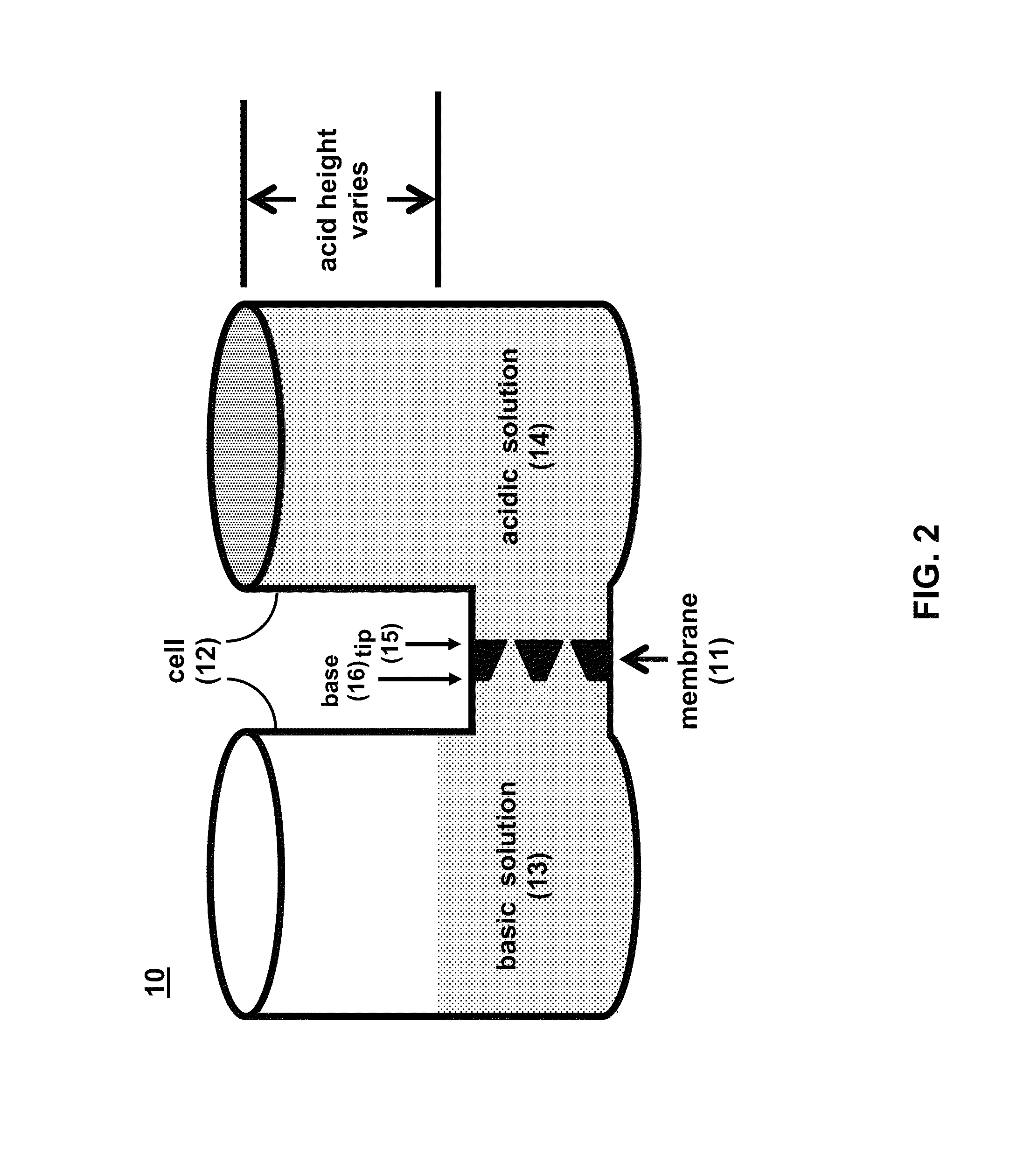Method to fabricate functionalized conical nanopores
a technology of conical nanopores and functionalized pores, which is applied in the field of nanoporous materials, can solve the problems of difficult to adapt to large-scale applications, requires expensive vacuum equipment, and cannot meet the requirements of nanoscale resolution, so as to achieve high density, avoid the risks associated, and retain the selectivity of nanopores
- Summary
- Abstract
- Description
- Claims
- Application Information
AI Technical Summary
Benefits of technology
Problems solved by technology
Method used
Image
Examples
Embodiment Construction
[0025]The present invention is directed to a method to controllably form conical nanopores in membranes. According to the method, a nanoporous membrane is placed between a concentrated basic solution and an acidic solution. A pressure difference applied across the nanoporous membrane is used to conically shape the nanopores. See P. Apel et al., Nucl. Instrum. Meth. B 184, 337 (2001); N. Li et al., Anal. Chem. 76, 2025 (2004); and P. Scopece et al., Nanotech. 17, 3951 (2006). The volume of the acidic solution is varied, thus controlling the pressure head applied across the membrane and, in turn, the acid flux through the nanopores. Further, at higher pressures effectively no etching is observed as the nanopore tip. Unlike previous methods, no large voltage, or even plasma etching, are required to create conical nanopores.
[0026]As an example of the invention, an ion-tracked polycarbonate membrane can be placed between a sodium hydroxide (NaOH) solution and a formic acid (HCOOH) soluti...
PUM
| Property | Measurement | Unit |
|---|---|---|
| pressure | aaaaa | aaaaa |
| pressure | aaaaa | aaaaa |
| diameter | aaaaa | aaaaa |
Abstract
Description
Claims
Application Information
 Login to View More
Login to View More - R&D
- Intellectual Property
- Life Sciences
- Materials
- Tech Scout
- Unparalleled Data Quality
- Higher Quality Content
- 60% Fewer Hallucinations
Browse by: Latest US Patents, China's latest patents, Technical Efficacy Thesaurus, Application Domain, Technology Topic, Popular Technical Reports.
© 2025 PatSnap. All rights reserved.Legal|Privacy policy|Modern Slavery Act Transparency Statement|Sitemap|About US| Contact US: help@patsnap.com



